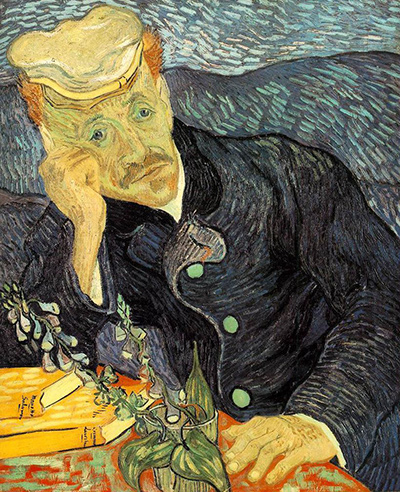Dr Gachet is a portrait by Vincent Van Gogh depicting a the doctor who looked after Van Gogh during the final months of the painter's life.
The picture was painted in 1890 and this was the same year in which Van Gogh died (he died in the month of July). As such, Dr Gachet is a very notable work as it is one of Van Gogh's last paintings. Like most of Van Gogh's works, this painting is made using oils on canvas which gives it a very rich look that has very much survived the test of time. Dr Gachet was a doctor who was particularly interested in taking care of artists and when Vincent Van Gogh's brother Theo found out about him, he sent the physically and mentally ill Vincent to stay with him.
Several aspects of Van Gogh's painting of Gachet help to represent Gachet's interests. For example, the foxgloves that Gachet is holding his hands reflects the doctor's interest in experimenting with digitalis (an active chemical substance present in foxgloves which is known for its effects on the heart). Van Gogh remains one of the leading figures in the Expressionist movement. This artistic movement is known for its expressive use of colour and form. Objects are not endowed with the 'realistic' colours that they have in realist paintings, but they are given the colours that the artist sees in their mind.
In Van Gogh's case, colours are extra rich and vivid and everything is given a sense of dynamic movement thanks to the way that he overlays different coloured lines in an energetic way across the canvas. At the same time, however, we can see Van Gogh's skill in draughtsmanship. Van Gogh's sketchbooks were filled with carefully drawn sketches that showed painstaking attention to proportion and shape.
Many of his early works were line drawings that display a notable sense of accuracy. The lapel of Gachet's coat in this painting, for example, is shaped very carefully by the artist and gives the painting a realistic - but still very Expressionist - look. The wavy landscape behind Gachet is, as is typical with Van Gogh's landscapes, divided into three clear blocks or strata. In many ways, this painting is the culmination of Van Gogh's Expressionist style, which he applied to both landscapes and to portraits of people who were important to him.




